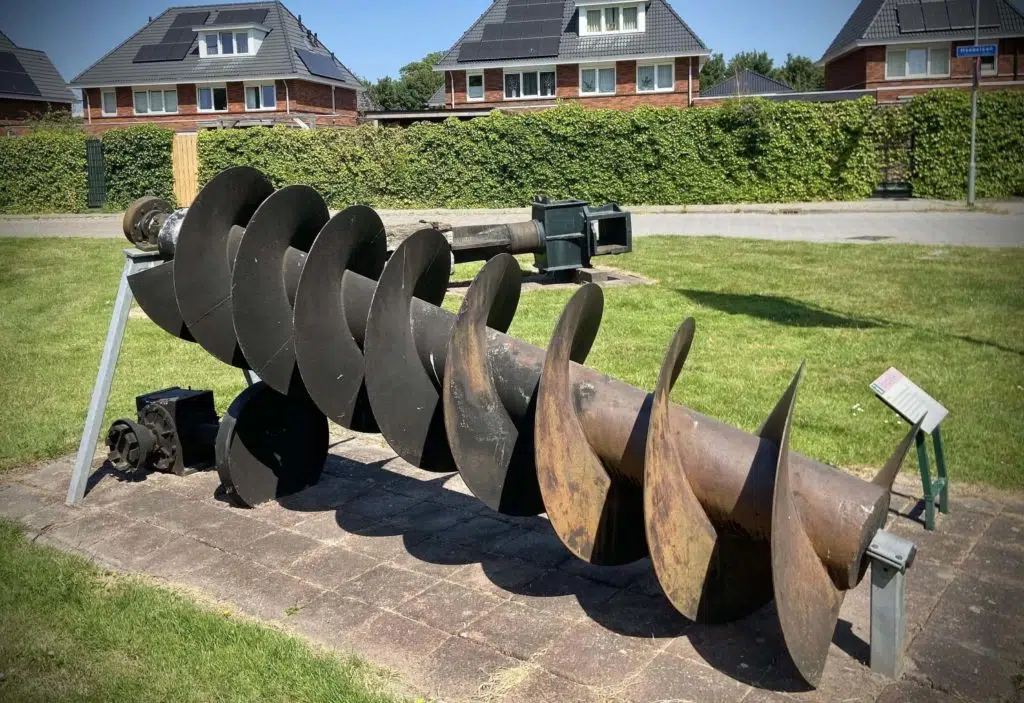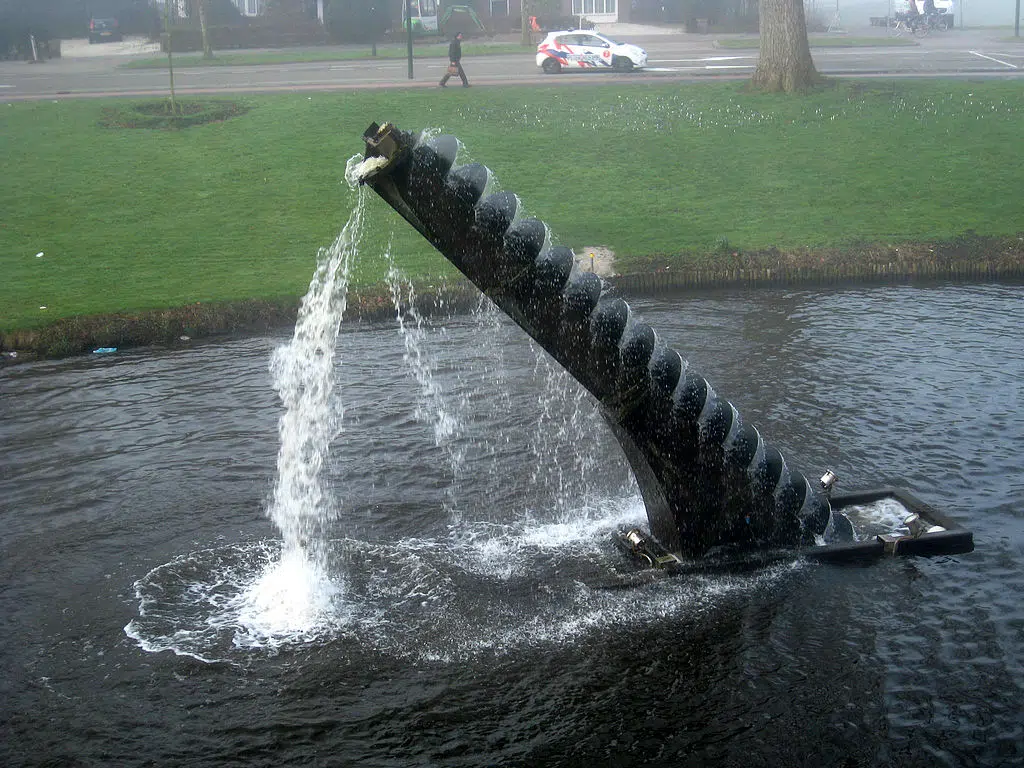
Have you ever wondered how ancient civilizations moved water uphill without modern technology? The answer lies in a simple yet very smart device called the Archimedes screw.
Named after the brilliant Greek mathematician and inventor Archimedes, who lived in the 3rd century BC, this technology has stood the test of time. The Archimedes screw is a machine that lifts water from a lower level to a higher one, using a rotating helical screw inside a pipe that is hallow.
Despite its ancient Greek origins, the Archimedes screw is still widely used today in various applications. The fascinating history, design, and modern uses of this remarkable invention showcase the value of ancient Greek science and engineering to this day.

The origins of the Archimedes screw
The Archimedes screw is a very simple yet ingenious device, useful to anyone who wants to defy gravity and lift water. While it is named after the Greek mathematician and great inventor Archimedes, archaeological evidence suggests that the device was used in ancient Egypt and Mesopotamia too.
Archimedes, however, played a crucial role in studying and describing the intricate details of the device mathematically. This is the reason why he is credited with developing a deeper understanding of the principles behind its operation, thus giving his name to the actual device.
The earliest known uses of the Archimedes screw were for irrigation in ancient Egypt. There are also suggestions by experts that it was also possibly used for dewatering ships in ancient Greece. The device proved invaluable in these ancient societies. The use of this machine helped people to move water from low-lying areas to higher ground. This was mainly for irrigation purposes.
How the Archimedes screw works
The Archimedes screw consists mainly of a screw. This is a helical surface surrounding a central cylindrical shaft inside a hollow pipe.
The screw is usually turned by manual labour, animals, a windmill, or even a motor, in more advanced versions. As the shaft rotates, the bottom end scoops up a volume of water. This water is then pushed up the tube by the rotating helicoid. This process continues until it pours out from the top.
The key to the successful operation of the Archimedes screw is the formation of individual pockets. There, water gets trapped as the tubing curves upward on both sides. As the screw rotates, it captures alternating pockets of air and water. These pockets move up the screw to the upper container. At this stage, the angle of tilt is really important. If it is too steep, water will flow back down instead of being lifted.
More contemporary versions of Archimedes screws are made from metal or composite materials. Nonetheless, the basic design remains the same as the ancient wooden versions
Applications Through History
Civilizations have been using the Archimedes screw for centuries. It has helped millions of people lift water for all sorts of purposes. From irrigation of dry lands to dewater mines and other low-lying areas, it has been a fantastic invention that helped humanity progress in so many levels. In ancient Egypt and Greece, it was invaluable. Both civilizations used it for raising water from rivers and lakes to higher ground. This facilitated agricultural purposes in areas that else would be left unused.
Later, during the Roman era, Archimedes screws were used to drain land for the creation of polders. This happened mainly in the Netherlands as well as other low-lying regions. The machines proved effective for this task because they could handle varying rates of flow as well as suspended solids.

Modern Uses of Archimedes Screws
The Archimedes screw has proven to be a timeless invention. With its applications extending well into the 21st century, it has been one of these cases where ancient ingenuity survived the millennia. Today, many people use this screw in wastewater treatment plants. There, its ability to handle varying flow rates and suspended solids makes it an ideal choice for moving sewage effectively.
In agriculture, people continue to use Archimedes screws for irrigation, in a similar way that ancient Greeks and Egyptians used to operate them. However, they have also found their way into modern machinery like combine harvesters and snow blowers, where they serve as augers for moving grain and snow.
Perhaps the most exciting modern application of the Archimedes screw is in hydroelectric power generation.
Archimedes screw turbines, which run in reverse to generate electricity from flowing water, are an emerging technology for small-scale, low-head hydropower. These turbines are not only efficient but also environmentally friendly. This is because their low rotation speeds minimise impact on aquatic life, protecting their habitats.
The versatility of the Archimedes screw along with its simplicity have ensured its relevance in the modern world. From everyday industrial uses to innovative renewable energy solutions, its timeless nature still shines bright.
The legacy of Archimedes’ screw
The Archimedes screw, a marvel of ancient Greek engineering, has stood the test of time. Its elegant design and versatile applications have made it an indispensable tool for moving water and other materials for over two millennia.
From its origins in ancient Egypt, Mesopotamia and Greece, where it revolutionised irrigation and drainage, to its modern-day uses in wastewater treatment, agriculture, and hydropower, the Archimedes screw has proven to be a truly timeless invention.
The longevity and adaptability of this simple machine shows the ingenuity of its design and the importance of ancient Greek science and technology.
As we continue to face challenges in water management and renewable energy to this day, the Archimedes screw remains as relevant as ever. It reminds us that sometimes the simplest solutions are the most effective.
See all the latest news from Greece and the world at Greekreporter.com. Contact our newsroom to report an update or send your story, photos and videos. Follow GR on Google News and subscribe here to our daily email!



